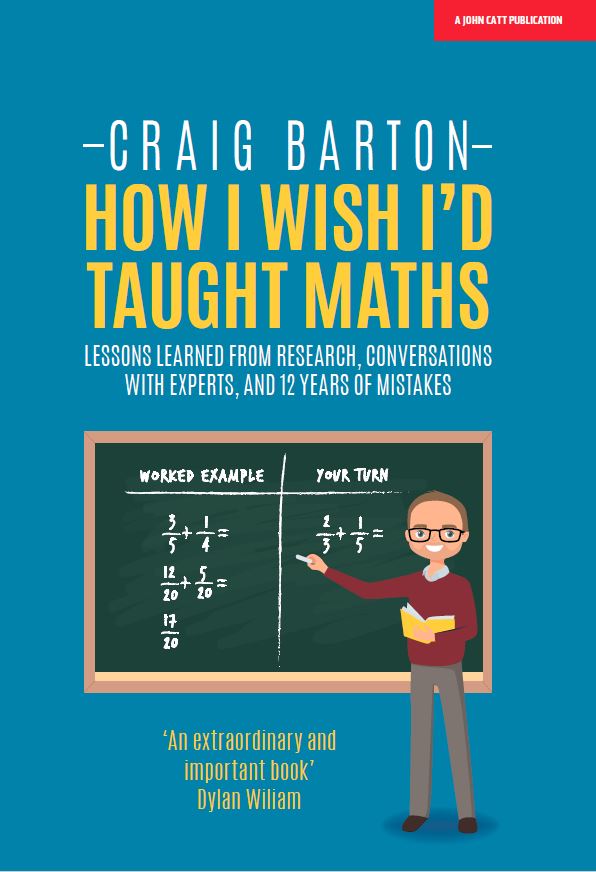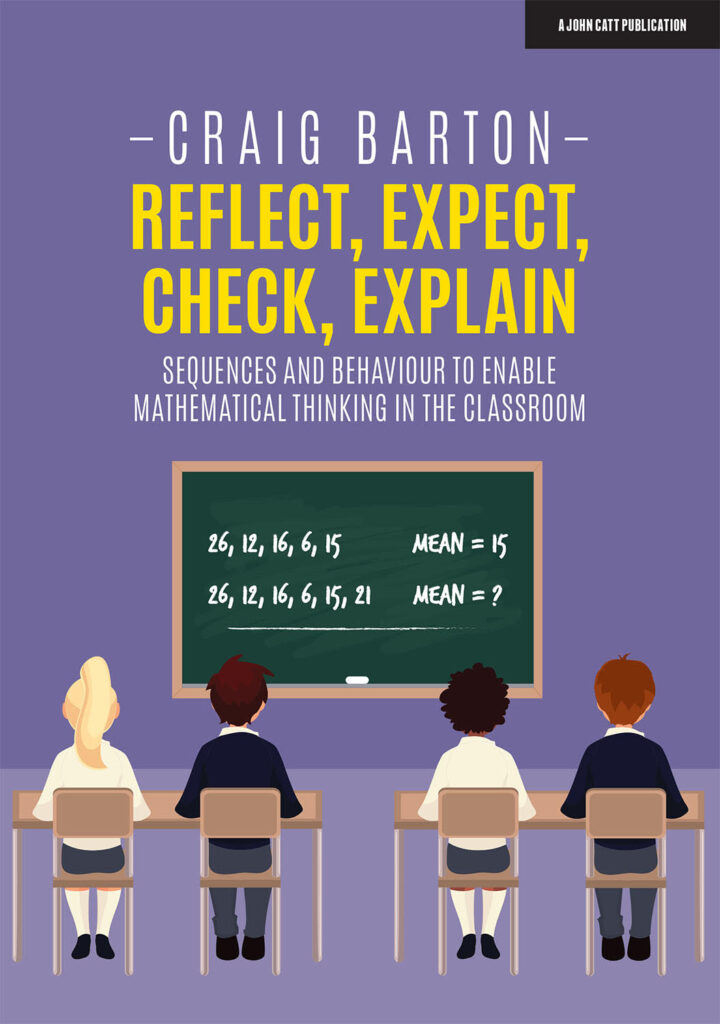2023 KS2 Mathematics Paper 3: Reasoning
Mark Scheme Legend
- 1m = 1 mark awarded
- 2m = Up to 2 marks available
⚠️ Non-Calculator Paper
Wait! This is technically a “Reasoning” paper where calculators are often not allowed for KS2 SATs, but the instructions say “You must not use a calculator”.
📚 Table of Contents
- Question 1 (Place Value)
- Question 2 (Number Words)
- Question 3 (Reflection)
- Question 4 (Sequences)
- Question 5 (Rounding)
- Question 6 (Missing Number)
- Question 7 (Number Patterns)
- Question 8 (Shape Names)
- Question 9 (Multiples)
- Question 10 (Square Numbers)
- Question 11 (Word Problem)
- Question 12 (Nets of Cuboids)
- Question 13 (Distributive Law)
- Question 14 (Fractions & Percentages)
- Question 15 (Time)
- Question 16 (Mass & Division)
- Question 17 (Fractions of Shapes)
- Question 18 (Bar Charts & Mean)
- Question 19 (Money)
- Question 20 (Algebraic Expressions)
- Question 21 (Percentages)
- Question 22 (Number Machines)
- Question 23 (Fractions & Decimals)
Question 1 (1 mark)
Chen has these digit cards:
She uses three of the cards to make a three-digit number.
Each card can be used only once.
Chen puts the 4 in the tens place.
Write the lowest three-digit number that Chen could make.
Step 1: Understanding the constraints
We need to make a 3-digit number using the digits 4, 8, 2, 7.
The 4 is fixed in the tens place: [ ] [ 4 ] [ ]
We have digits 8, 2, 7 remaining.
Step 2: Finding the lowest number
To make the number as small as possible:
- Put the smallest available digit in the Hundreds place (the most valuable place).
- Put the next smallest digit in the Ones place.
Available digits: 2, 7, 8.
Smallest is 2. So put 2 in the hundreds place.
Next smallest is 7. So put 7 in the ones place.
Final Answer:
247
✓ (1m)
Question 2 (1 mark)
Tick the number eighty thousand, three hundred and six.
- 8,306
- 80,036
- 80,306
- 800,306
- 80,300,006
Step 1: Break down the words
“Eighty thousand” = 80,000
“Three hundred” = 300
“Six” = 6
Step 2: Combine
80,000 + 300 + 6 = 80,306
Final Answer:
80,306
✓ (1m)
Question 3 (1 mark)
Amina draws triangle ABC on a grid as shown.
She then reflects the triangle in the \(y\)-axis.
Draw the reflected triangle on the grid.
Step 1: Understanding Reflection
Reflecting in the \(y\)-axis (the vertical line) means the shape flips horizontally.
Every point on the left moves to the same distance on the right.
Step 2: Reflecting Coordinates
- Point C is 1 square left of the axis. It moves to 1 square right.
- Point B is 3 squares left of the axis. It moves to 3 squares right.
- Point A is 3 squares left of the axis. It moves to 3 squares right.
Final Answer:
✓ (1m)
Question 4 (1 mark)
Write the next two numbers in this sequence.
1,780 1,880 1,980
Step 1: Identify the rule
\(1,880 – 1,780 = 100\)
\(1,980 – 1,880 = 100\)
The sequence is increasing by 100 each time.
Step 2: Apply the rule
\(1,980 + 100 = 2,080\)
\(2,080 + 100 = 2,180\)
Final Answer:
2,080, 2,180
✓ (1m)
Question 5 (1 mark)
Circle the two decimals that round to the same whole number.
13.2 14.7 15.9 16.3 17.6
Step 1: Round each number
- 13.2 rounds to 13 (down)
- 14.7 rounds to 15 (up)
- 15.9 rounds to 16 (up)
- 16.3 rounds to 16 (down)
- 17.6 rounds to 18 (up)
Step 2: Identify the pair
15.9 and 16.3 both round to 16.
Final Answer:
15.9 and 16.3
✓ (1m)
Question 6 (1 mark)
Write the missing number to make the calculation correct.
\[ 1,300,450 = 1,000,000 + \boxed{\quad\quad\quad} + 400 + 50 \]
Step 1: Partition the number
\(1,300,450\) represents:
- 1,000,000 (One million)
- 300,000 (Three hundred thousand)
- 400 (Four hundred)
- 50 (Fifty)
Step 2: Compare with equation
We have 1,000,000, 400, and 50.
The missing part is 300,000.
Final Answer:
300,000
✓ (1m)
Question 7 (1 mark)
Here is part of a number square. The other part of the square has been torn off.
What number was in the bottom-left corner of the number square?
Step 1: Analyze the pattern
Looking at the first row: \(\frac{1}{2}, 1, 1\frac{1}{2}, \dots\)
The numbers increase by \(\frac{1}{2}\) (0.5) each step.
Step 2: Find the vertical jump
Look at the first number in Row 1: 0.5
Look at the first number in Row 2: 3
The difference is \(3 – 0.5 = 2.5\).
This means each row starts 2.5 higher than the row above it.
Step 3: Calculate down to the bottom-left corner
We need to find the number in the first column of the 5th row.
- Row 1: 0.5
- Row 2: 3.0 (0.5 + 2.5)
- Row 3: 5.5 (3.0 + 2.5)
- Row 4: 8.0 (5.5 + 2.5)
- Row 5: 10.5 (8.0 + 2.5)
Final Answer:
10 \(\frac{1}{2}\) (or 10.5)
✓ (1m)
Question 8 (1 mark)
Match each shape to the correct name.
Step 1: Identify Sides and Regularity
- Shape 1: 6 sides, not all equal. -> Irregular Hexagon.
- Shape 2: 5 sides (house shape), not all angles equal. -> Irregular Pentagon.
- Shape 3: 5 sides, looks equal. -> Regular Pentagon.
- Shape 4: 6 sides, looks equal (or irregular in sketch, but marked as Hexagon). -> Regular Hexagon.
Final Answer:
Shape 1 → irregular hexagon
Shape 2 → irregular pentagon
Shape 3 → regular pentagon
Shape 4 → regular hexagon
✓ (1m)
Question 9 (1 mark)
Jack says,
Explain why Jack is not correct.
Step 1: Check multiples of 3
We know that \(10 \times 3 = 30\).
The next multiple is \(11 \times 3 = 33\).
Step 2: Conclusion
32 is between 30 and 33, so it is not in the 3 times table.
Example Answer:
“32 is not in the 3 times table.” OR “32 is not a multiple of 3.”
✓ (1m)
Question 10 (1 mark)
Write the missing square number to make this addition correct.
\[ 8^2 + \_\_^2 = 73 \]
Step 1: Calculate \(8^2\)
\(8 \times 8 = 64\)
Step 2: Find the missing value
\(64 + \text{something} = 73\)
\(73 – 64 = 9\)
Step 3: Convert to a square number
The question asks for the base of the square: \(\_\_^2 = 9\).
Which number squared makes 9? \(3 \times 3 = 9\).
Final Answer:
3
✓ (1m)
Question 11 (2 marks)
At the start of April, a shop had 15,000 games.
The shop sold:
- 7,918 games in April
- 4,624 games in May.
How many games did the shop have left at the end of May?
Step 1: Calculate total sold
7918 + 4624 ------- 12542 -------
Step 2: Subtract from starting amount
15000 - 12542 ------- 2458 -------
Working: \(0-2\) can’t do, borrow… becomes \(10-2=8\), \(9-4=5\), \(9-5=4\), \(4-2=2\).
Final Answer:
2,458 games
✓ (2m)
Question 12 (2 marks)
This is a drawing of a cuboid.
Tick the nets that could make the cuboid.
Net A (4 in a row, one top, one bottom)
Net B (Long T-shape)
Net C (2×3 block?)
Net D (1-4-1 standard)
Note: In the exam, you need to visualize folding these. The correct nets allow the shape to close without overlapping faces.
Step 1: Visualize folding
A cuboid net typically needs 4 rectangular faces in a row (for the sides) and two square/end faces on opposite sides of the strip.
Step 2: Identify valid nets
The Mark Scheme accepts two nets:
- The 2nd net shown (often a T-shape or similar arrangement where faces don’t overlap).
- The 4th net shown (Standard cross or 1-4-1).
Final Answer:
Tick the 2nd and 4th nets.
✓ (2m)
Question 13 (1 mark)
Write the missing number to make this calculation correct.
\[ 754 \times 6 + 754 \times 3 = 754 \times \boxed{\quad} \]
Step 1: Use the Distributive Law
We have 6 lots of 754 plus 3 lots of 754.
\(754 \times (6 + 3)\)
Step 2: Add the multipliers
\(6 + 3 = 9\)
So, \(754 \times 9\).
Final Answer:
9
✓ (1m)
Question 14 (2 marks)
Here are five digit cards:
Use two cards to make a fraction equivalent to 25%.
\[ \frac{\boxed{\quad}}{\boxed{\quad}} \]
Use two cards to make a fraction equivalent to 0.4.
\[ \frac{\boxed{\quad}}{\boxed{\quad}} \]
Part A: 25%
25% is equal to \(\frac{1}{4}\).
Do we have cards 1 and 4? Yes.
Answer: \(\frac{1}{4}\)
Part B: 0.4
0.4 is equal to \(\frac{4}{10}\) or \(\frac{2}{5}\).
Do we have cards 2 and 5? Yes.
Answer: \(\frac{2}{5}\)
Final Answer:
Part 1: \(\frac{1}{4}\)
Part 2: \(\frac{2}{5}\)
✓ (2m)
Question 15 (2 marks)
Amina went to a concert one evening.
It took her an hour and twenty minutes to get there from home.
She arrived at ten past seven.
At what time did she leave home?
The concert started at 7:20 pm.
It finished at 9:05 pm.
How long did the concert last?
Part A: Leaving Home
Arrival: 7:10 (Ten past seven).
Travel time: 1 hour 20 minutes.
Subtract 1 hour: 6:10.
Subtract 20 minutes: 6:10 – 10 mins = 6:00, – 10 mins = 5:50.
Answer: 5:50 pm (or 17:50).
Part B: Duration
Start: 7:20 pm.
Finish: 9:05 pm.
7:20 to 8:20 = 1 hour.
8:20 to 9:00 = 40 minutes.
9:00 to 9:05 = 5 minutes.
Total minutes = 40 + 5 = 45 minutes.
Total time: 1 hour 45 minutes.
Final Answer:
5:50 pm
1 hour 45 minutes
✓ (2m)
Question 16 (2 marks)
A box of 24 chocolate eggs has a mass of 870 grams.
The empty box has a mass of 30 grams.
What is the mass of one chocolate egg?
Step 1: Find mass of eggs only
Total mass – Box mass = Eggs mass
\(870 – 30 = 840\) grams.
Step 2: Divide by number of eggs
We need to do \(840 \div 24\).
35
----
24|840
-720 (30 x 24)
---
120
-120 (5 x 24)
---
0
Calculation: \(24 \times 3 = 72\), so \(24 \times 30 = 720\). Remainder 120.
\(24 \times 5 = 120\).
Total = 35.
Final Answer:
35 g
✓ (2m)
Question 17 (1 mark)
This rectangle is divided into three parts.
Part A is \(\frac{1}{2}\) of the area of the rectangle.
Part B is \(\frac{1}{3}\) of the area of the rectangle.
Parts A and B are shaded. What fraction of the area of the rectangle is shaded?
Step 1: Add the fractions
We need to add \(\frac{1}{2} + \frac{1}{3}\).
Step 2: Find common denominator
Common denominator is 6.
\(\frac{1}{2} = \frac{3}{6}\)
\(\frac{1}{3} = \frac{2}{6}\)
Step 3: Calculate sum
\(\frac{3}{6} + \frac{2}{6} = \frac{5}{6}\)
Final Answer:
\(\frac{5}{6}\)
✓ (1m)
Question 18 (3 marks)
This table shows the total rainfall and sunshine each year at Heathrow Airport from 2010 to 2015.
| Year | Rainfall (mm) | Sunshine (hours) |
|---|---|---|
| 2010 | 521 | 1,371 |
| 2011 | 509 | 1,540 |
| 2012 | 700 | 1,503 |
| 2013 | 560 | 1,452 |
| 2014 | 864 | 1,669 |
| 2015 | 562 | 1,508 |
a) Use this table to complete the graph (Draw the bar for 2012 rainfall: 700mm).
b) Use the table to calculate the mean hours of sunshine for Heathrow Airport from 2013 to 2015.
Part A: Graphing
Locate 2012 Rainfall in table: 700.
Draw a bar up to the 700 line on the graph.
Part B: Calculating Mean
We need sunshine hours for 2013, 2014, and 2015.
2013: 1,452
2014: 1,669
2015: 1,508
Step 2: Add them up
1452 1669 +1508 ----- 4629 -----
Step 3: Divide by 3
\(4629 \div 3\)
\(4000 \div 3 = 1333\)… easier to use bus stop.
4 div 3 = 1 r 1.
16 div 3 = 5 r 1.
12 div 3 = 4.
9 div 3 = 3.
Result: 1,543.
Final Answer:
1,543 hours
✓ (3m total)
Question 19 (2 marks)
Mushrooms: £3.20 for 1 kg
Carrots: 60p for 1 kg
Layla buys 500 grams of mushrooms and \(1\frac{1}{4}\) kg of carrots.
She pays with a £5 note.
How much change does Layla get?
Step 1: Cost of Mushrooms
500g is half a kg.
\(3.20 \div 2 = £1.60\).
Step 2: Cost of Carrots
\(1\frac{1}{4}\) kg is 1.25 kg.
1 kg = 60p.
\(\frac{1}{4}\) kg = \(60 \div 4 = 15\)p.
Total for carrots = \(60p + 15p = 75\)p (or £0.75).
Step 3: Total Cost
\(£1.60 + £0.75 = £2.35\).
Step 4: Change
\(£5.00 – £2.35 = £2.65\).
Final Answer:
£2.65
✓ (2m)
Question 20 (2 marks)
The length of this rectangle is 6 cm. The width is \(w\) cm.
Circle all the methods below that can be used to work out the perimeter of the rectangle.
\(w \times 2 + 12\)
\(2 \times (w + 6)\)
\(6 + w + 6 + w\)
Step 1: Understand Perimeter
Perimeter is distance around the outside: \(w + 6 + w + 6\).
This simplifies to \(2w + 12\) or \(2 \times (w+6)\).
Step 2: Check each option
- \(w \times 6\) = Area (Incorrect)
- \(w \times 2 + 12\) = \(2w + 12\) (Correct, as \(2 \times 6 = 12\))
- \(2 \times (w + 6)\) = Correct formula
- \(6 + w + 6 + w\) = Correct sum
Final Answer:
Circle:
\(w \times 2 + 12\)
\(2 \times (w + 6)\)
\(6 + w + 6 + w\)
✓ (2m)
Question 21 (3 marks)
There are 25 classes in a school.
Each class has 34 pupils.
62% of all the pupils play a sport after school.
What number of pupils do not play a sport?
Step 1: Total pupils
\(25 \times 34\).
\(25 \times 4 = 100\). \(34 = 4 \times 8 + 2\). Or just long multiply.
\(34 \times 100 = 3400\). \(3400 \div 4 = 850\).
Total = 850 pupils.
Step 2: Percentage NOT playing sport
\(100\% – 62\% = 38\%\).
Step 3: Calculate 38% of 850
\(10\% = 85\).
\(30\% = 85 \times 3 = 255\).
\(1\% = 8.5\).
\(8\% = 8.5 \times 8 = 68\).
Total: \(255 + 68 = 323\).
Final Answer:
323 pupils
✓ (3m)
Question 22 (1 mark)
Megan uses these number machines to calculate how many diagonals different shapes have.
Triangle (3 vertices) \(\to \times 0 \to \div 2 \to 0\)
Quadrilateral (4 vertices) \(\to \times 1 \to \div 2 \to 2\)
Pentagon (5 vertices) \(\to \times 2 \to \div 2 \to 5\)
Complete the number machine for the octagon.
Octagon (8 vertices) \(\to \boxed{\quad} \to \boxed{\quad} \to \boxed{\quad}\)
Step 1: Identify the pattern
Input 3 \(\to \times 0\) (3-3)
Input 4 \(\to \times 1\) (4-3)
Input 5 \(\to \times 2\) (5-3)
Rule: Multiply by (Number – 3), then divide by 2.
Step 2: Apply to Octagon (8)
Multiply by: \(8 – 3 = 5\).
Second step is always: \(\div 2\).
Calculate: \(8 \times 5 = 40\). \(40 \div 2 = 20\).
Final Answer:
Octagon \(\to \times 5 \to \div 2 \to 20\)
✓ (1m)
Question 23 (2 marks)
Write the missing decimals.
| \(a\) | \(b\) | \(\frac{a}{b}\) |
|---|---|---|
| 1 | 4 | 0.25 |
| 3 | 20 | |
| 5 | 8 |
Row 2: \(\frac{3}{20}\)
To convert to decimal, make denominator 100.
\(\frac{3}{20} \times 5 = \frac{15}{100}\).
Decimal: 0.15
Row 3: \(\frac{5}{8}\)
Memorize that \(\frac{1}{8} = 0.125\).
\(5 \times 0.125 = 0.625\).
Final Answer:
0.15
0.625
✓ (2m)








